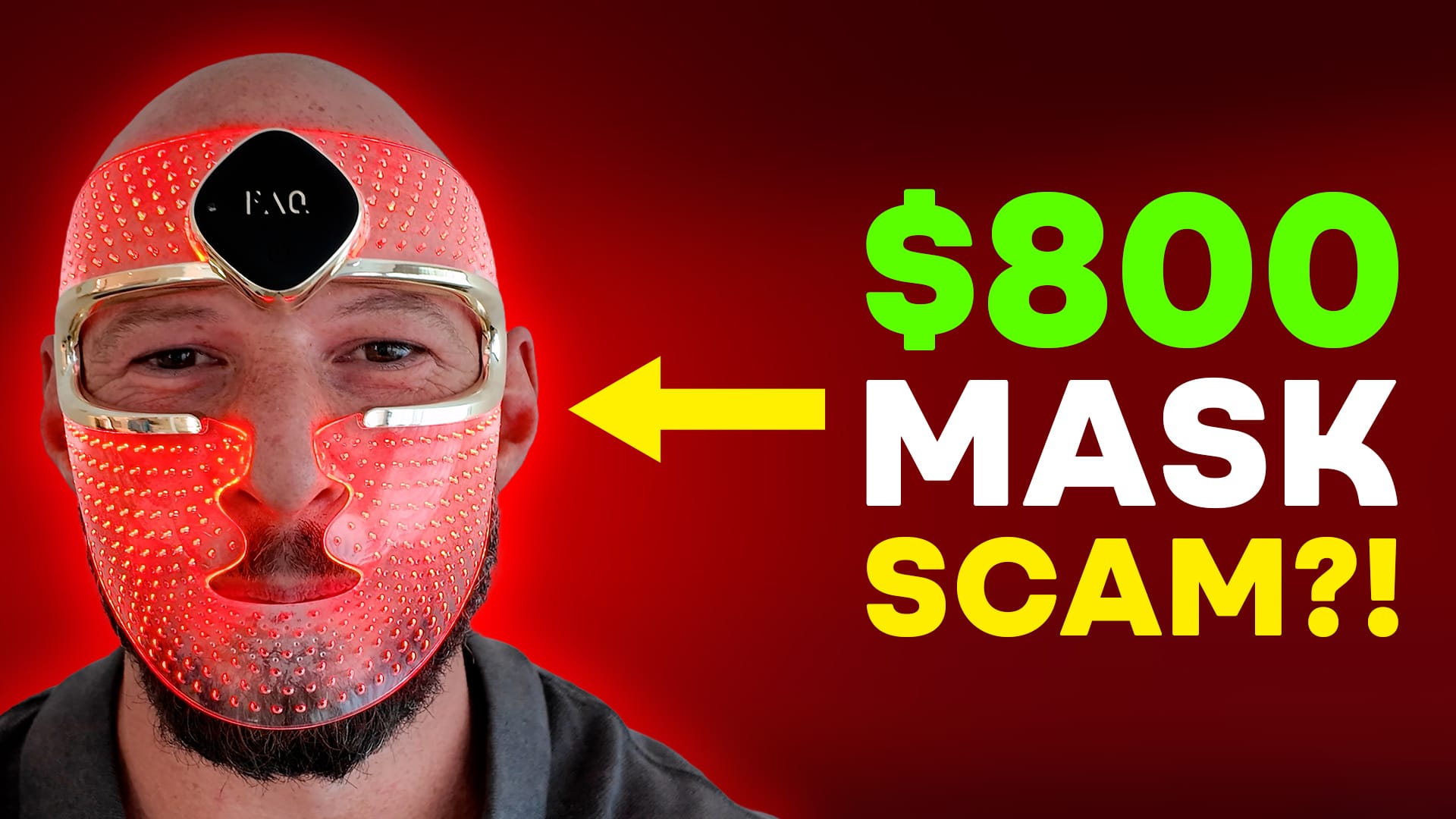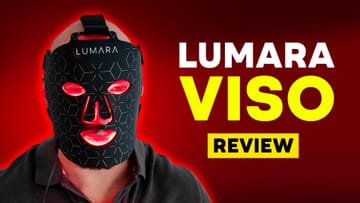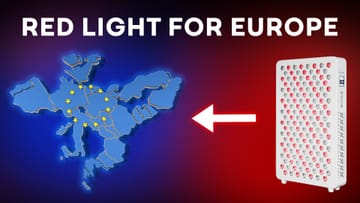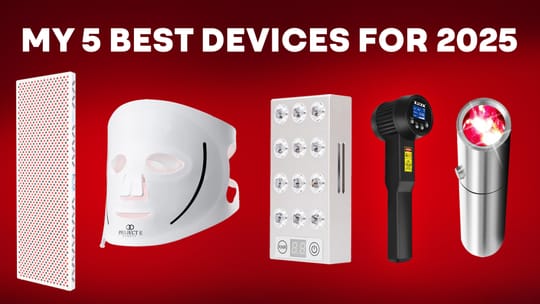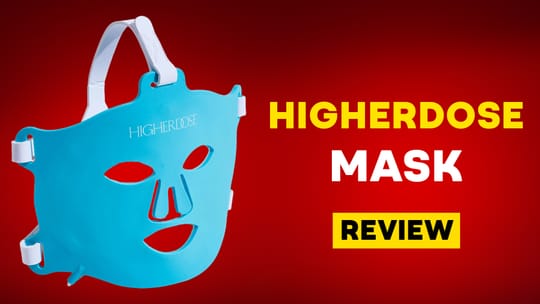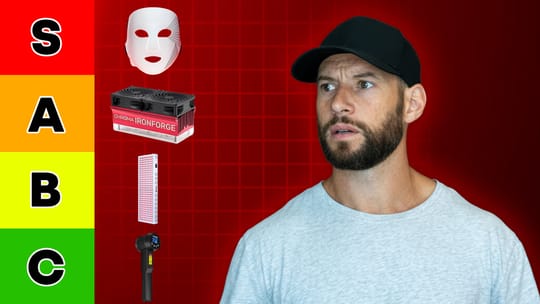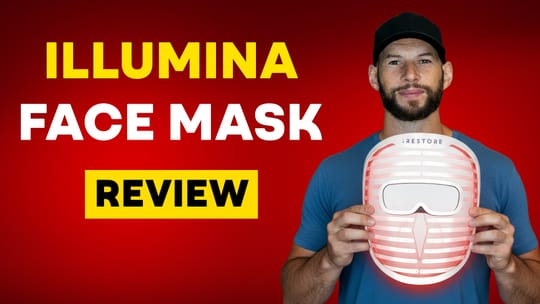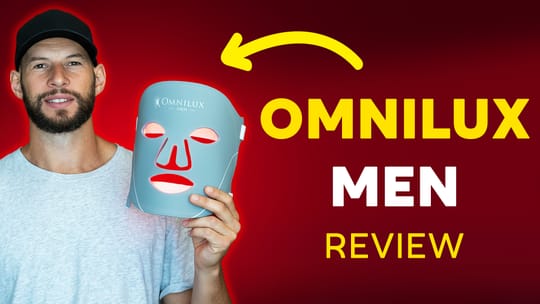Foreo FAQ 202 Mask Review: A Unique Design That Falls Short
I’ve been immersed in the red light therapy space for seven or eight years now, and honestly, I have never seen anything quite like the Foreo FAQ 202 mask. From the moment I unboxed it, I wasn’t quite sure where to start.
If you’re thinking about buying this mask, you absolutely must read this whole review first. And if you already have one—well, I’m sorry to say, it’s pretty terrible.
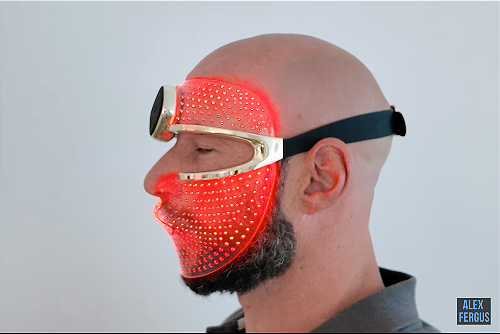
At first glance, it looks impressive. It has a metal frame with a silicon “mesh” faceplate that glows with tiny dots of light. It’s tempting to think those are hundreds of little LEDs embedded throughout the mask, but they’re not. The reality is, all the LEDs are located just in the frame around the edges. The light shines through the silicon mesh, which is full of little holes, creating the illusion of widespread coverage. It looks cool, no doubt. But functionally, it’s a different story.
This design drastically limits the amount of light that penetrates your skin. The silicon mesh scatters and diffuses the light, meaning much of the energy is lost before it can reach the surface of your skin. It’s a fundamental problem that undermines everything the mask promises. The company’s website claims the mask delivers light evenly across every millimeter of your skin, but testing shows that’s not the case.
Round 1: Fit and Ease of Use
Let’s start with the fit and how the mask feels when worn. The FAQ 202 actually scores reasonably well here. The mask stays in place during use, and it’s pretty easy to put on and take off. The strap system is simple but effective.
However, there are some real issues with comfort. The mask tends to pinch around the nostrils, which isn’t ideal if you’re breathing through your nose. There’s also slight interference around the lips, though it’s tolerable.
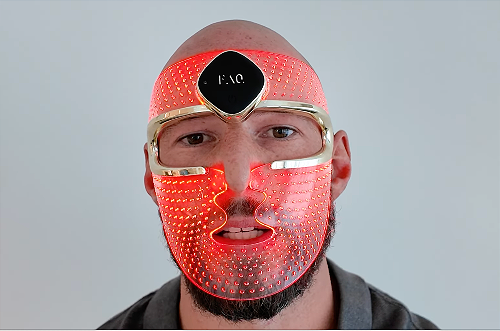
The ventilation is decent thanks to the many tiny holes in the silicon faceplate, so you don’t end up sweating under the mask. Skin contact is surprisingly good given the unique design, but the nose and lip pinch significantly detracts from the score.
Fit Score: 11 out of 15
In terms of operation, the FAQ 202 is straightforward. It has one button to turn it on and cycle through colors, and it’s cordless, which is always a plus. The companion app is polished and lets you customize color modes, intensity, and timer settings.
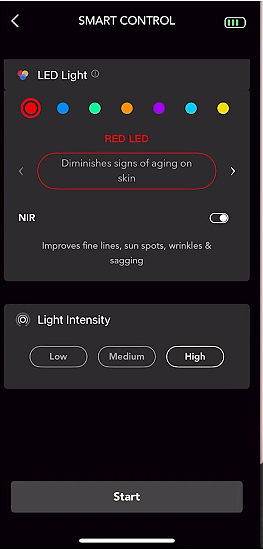
However, I was caught off guard by the app pushing a pricey monthly membership, which feels unnecessary.
Another downside here is the lack of a printed manual—everything’s digital or online, which might frustrate newcomers to red light therapy. The charging port is outdated too; I was surprised there’s no USB-C, mainly since most masks today include it for convenience and faster charging. The mask is somewhat flexible and light, but I’d worry about the durability of the main eyepiece, especially if you travel with it.
Operation Score: 8 out of 10
That gives the first round, Fit and Ease of Use, a total of 19 out of 25, which is decent but far from outstanding.
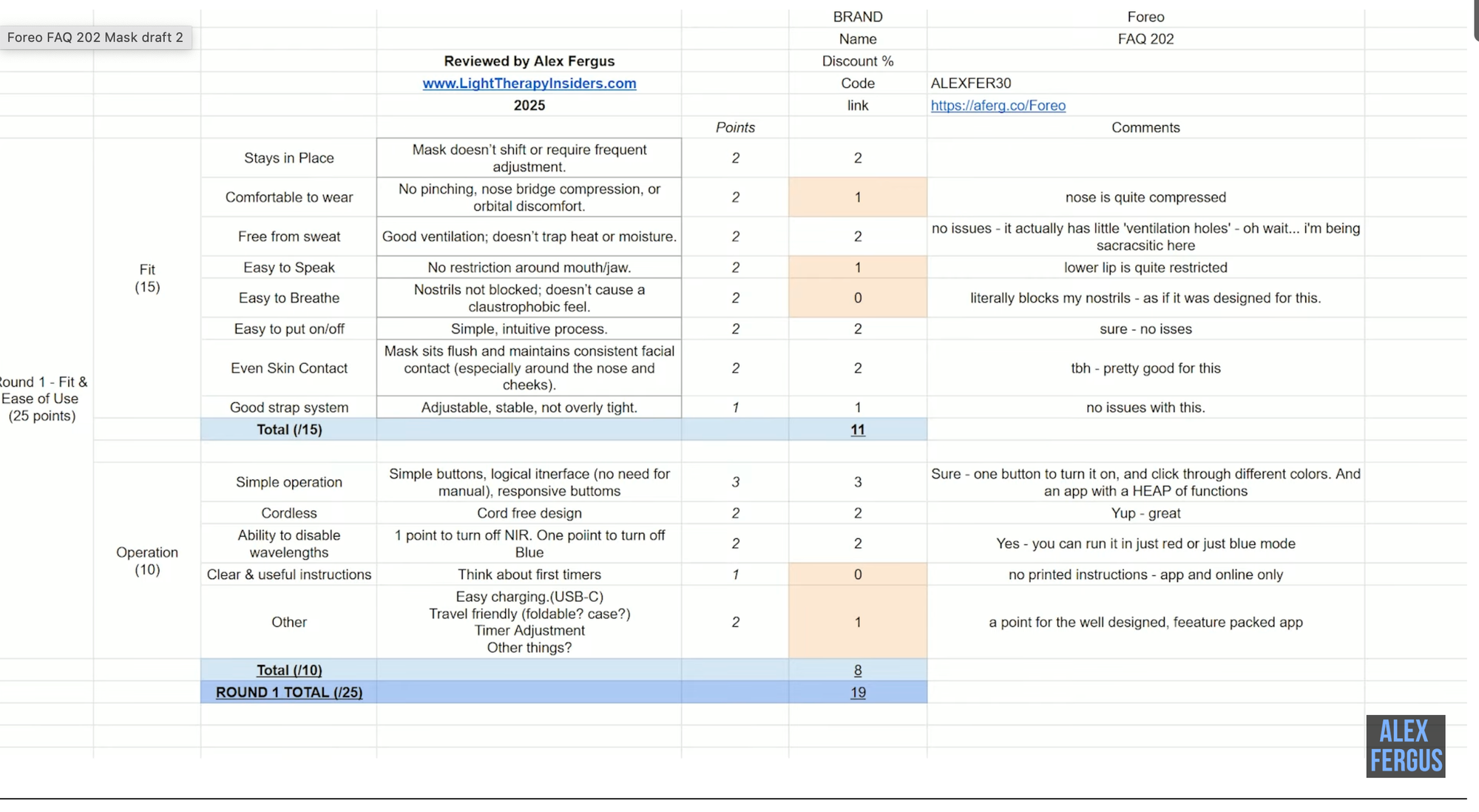
Round 2: Therapeutic Power
Now we get to the heart of the matter—how powerful and effective is the light itself? This is where the FAQ 202 starts to fall apart.
Using my high-end spectrometer, I measured the wavelengths emitted by the LEDs in the frame. The mask provides red light at 628 nm, blue at 462 nm, and green at 516 nm.
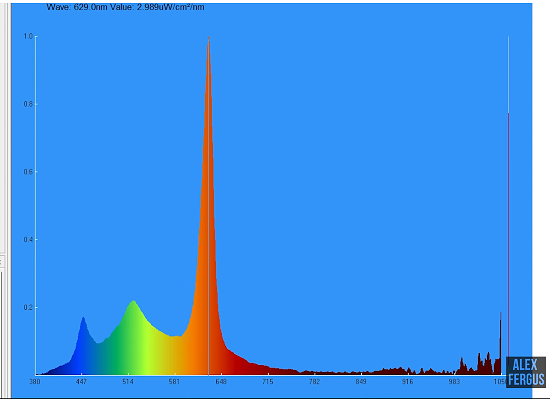
• Red light is excellent for anti-aging, collagen production, and improving skin texture.
• Blue light is effective for acne and eczema.
• Green light has some emerging research supporting anti-aging benefits as well.
However, the mask claims to offer near infrared light at 854 nm, which is critical for deeper skin rejuvenation and healing. I tested this extensively with the near infrared mode toggled on and off in the app, and I couldn’t detect any near infrared emission at all. That’s a big problem, as it means you’re missing out on one of the most essential wavelengths for therapeutic benefit.
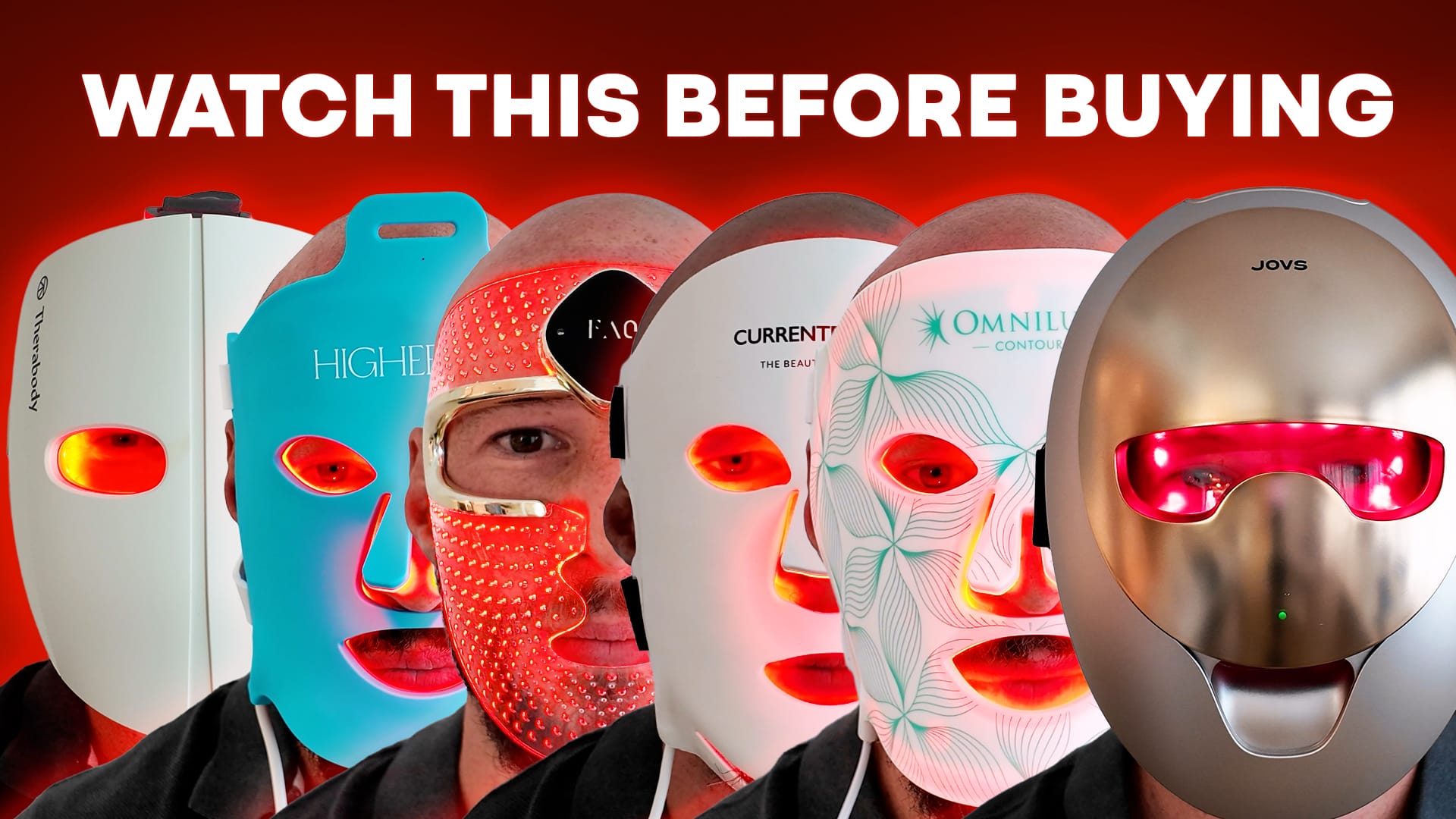
There are also claims of orange (600 nm), yellow (580 nm), and purple (440 nm) wavelengths, but these are misleading. What’s happening is that the mask blends red, green, and blue LEDs at different intensities to create these colors visually. The spectrometer shows no meaningful presence of the specific orange, yellow, or purple wavelengths as advertised.
Wavelength Score: 4.5 out of 10
Now for fluence—the amount of light energy delivered to your skin over a treatment session. This is critical because dosing is crucial in red light therapy. Too little energy, and you get no results. Too much, and benefits plateau or diminish.
The optimal dose for anti-aging and skin rejuvenation sits between roughly 5 and 9 joules per square centimeter. The FAQ 202’s actual power output is embarrassingly low. Across multiple measurement points, the average radiance was only 0.2 milliwatts per square centimeter.
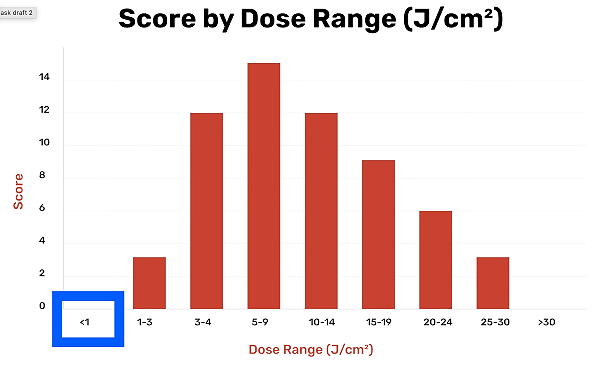
For context, my iPhone flashlight emits over 19 milliwatts per square centimeter of red light, about 100 times more energy than this mask’s LEDs in any given spot.
With a default session time of 15 minutes, the total dose comes out to just 0.19 joules per square centimeter—practically negligible. Even if the LEDs were five times stronger, it would still be below the minimum effective threshold.
The joules are so low because the actual LEDs are only embedded in the metal frame around the edges of the mask, not spread throughout the silicone faceplate as it might appear.
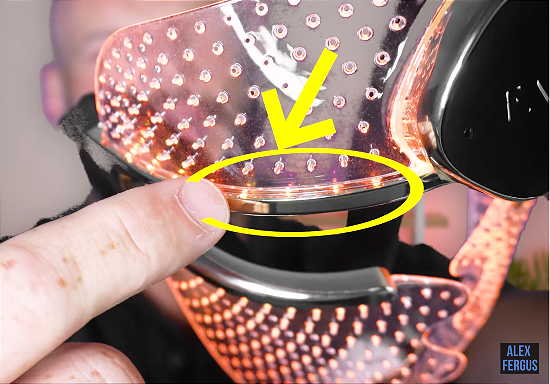
The mask itself is essentially just a flexible silicone mesh with no wiring or LEDs inside it—just holes that let light from the frame shine through. This design means the light has to travel from those weak LEDs in the frame, pass through the silicone mesh, scatter through the holes, and then reflect downward onto the skin.
As a result, a considerable amount of the light energy is lost before it even reaches your face, making the effective dose extremely low—far below what’s needed for meaningful red light therapy benefits.
This painfully low fluence means the mask won’t provide any meaningful therapeutic benefits, no matter how cool it looks or how many colors it cycles through.
Fluence Score: 0 out of 15
Adding wavelength and fluence scores together, the therapeutic power round nets a disappointing 4.5 out of 25.
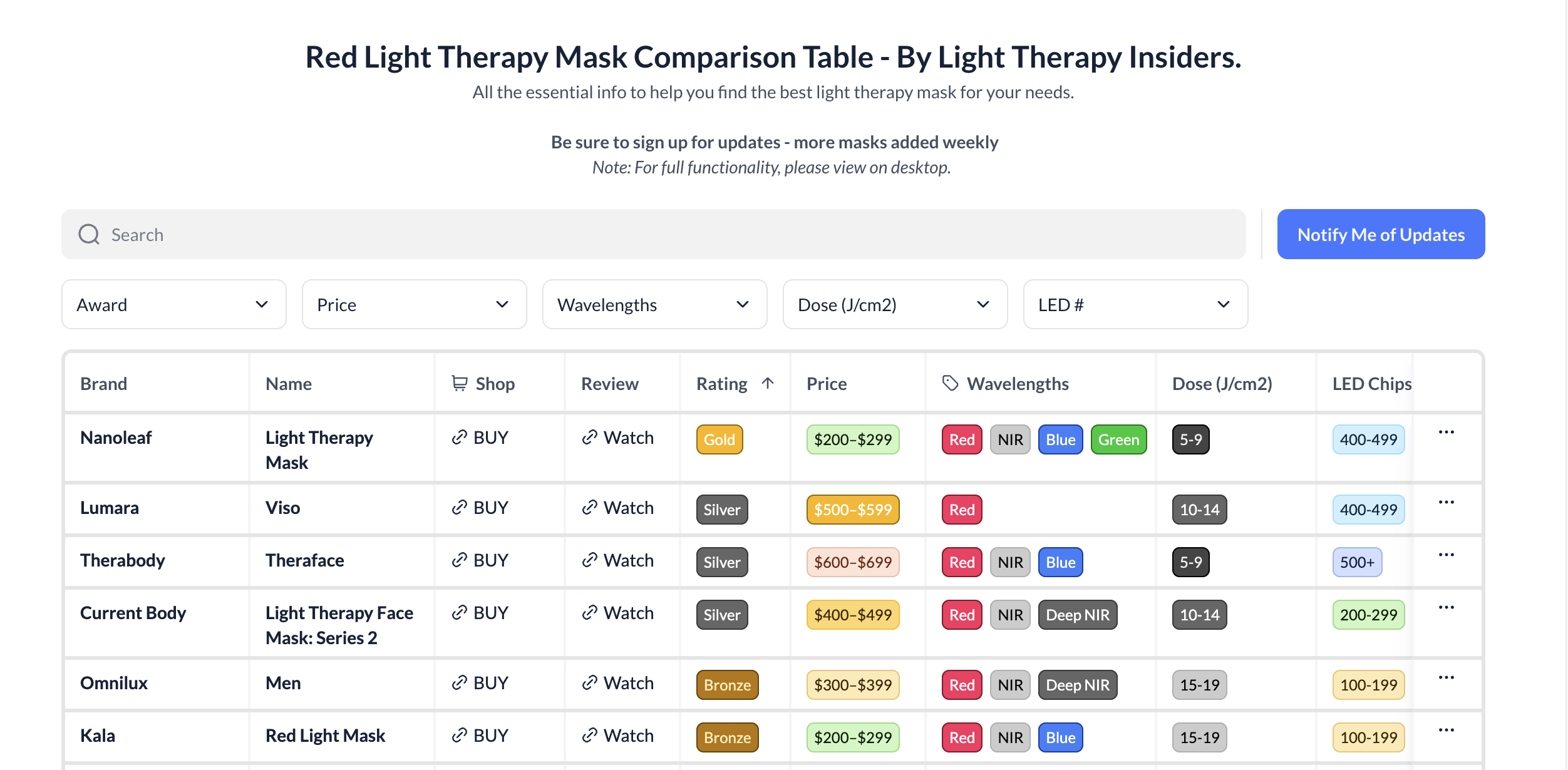
Round 3: Coverage Quality
Moving on to coverage, the mask does have 50 LEDs embedded around the frame, and because they’re triple-chip LEDs, that means technically 150 LED chips in total. So the LED count isn’t terrible in isolation.
LED Count Score: 4 out of 10
Want Help Choosing a Red Light Mask? I built my Red Light Mask Guide. An interactive tool that compares the top masks side by side.
But how well does that light hit the key areas of your face?
Coverage is uneven at best. You get decent light on the forehead and temples, and a bit on the cheeks, chin, and lips. But there’s almost no coverage in critical zones like the under-eye area, nose bridge, jawline, and crow’s feet. The nose itself only gets about 10% coverage, which is minimal for such a prominent facial feature.
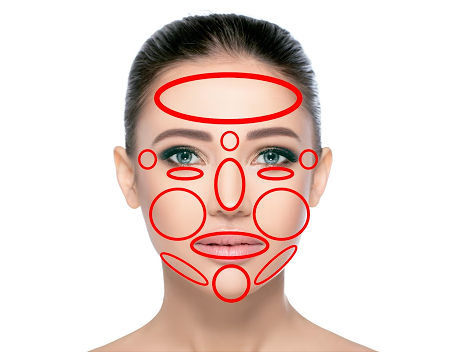
What’s more, the light being emitted from the frame LEDs shines through the silicon mesh holes and scatters, creating a dotted pattern that looks neat but does little to ensure consistent and therapeutic exposure.
Zone Coverage Score: 6 out of 10
That makes the total coverage score 10 out of 25, which is better than nothing, but certainly not enough to justify the hype.
Round 4: Price and Peace of Mind
Here’s where things start to sting. The Foreo FAQ 202 retails at a whopping $799, making it the most expensive mask I’ve tested to date. Most other masks hover in the $300–$600 range, with some exceptions, but $800 is steep, especially given the poor performance.
Price Score: 6 out of 20
On the plus side, Foreo is an established company founded in 2013, so there’s some reliability there. The mask also comes with a two-year warranty, which is reassuring.
But the returns policy is frankly disappointing. You only get a full refund if you return the product within 14 days and the box is unopened. Open the box, and you lose any chance of a refund. For such an expensive, underperforming product, this restrictive return window is a major red flag.
Return Policy Score: 2 out of 5
Combining peace of mind and price, this round totals 8 out of 25.
Final Thoughts and Overall Score
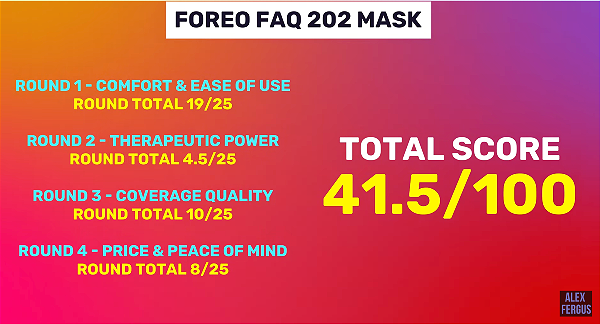
Adding it all up, the Foreo FAQ 202 mask scores 41.5 out of 100—officially the lowest rating I’ve given to any mask so far, including some very cheap Amazon knockoffs.
This mask fails to deliver on nearly every promise it makes. The design, while visually unique, results in severe energy loss. The therapeutic power is almost nonexistent. The coverage is patchy, and the price is outrageously high considering the performance.
Claims on the company’s website, like “reduces wrinkles by 32% in two weeks,” have no cited clinical evidence backing them. They talk about “600 optimized points of light” and 100% user satisfaction, but my own experience and testing tell a very different story.
If you’re after real results in red light therapy, there are better options available at lower prices.
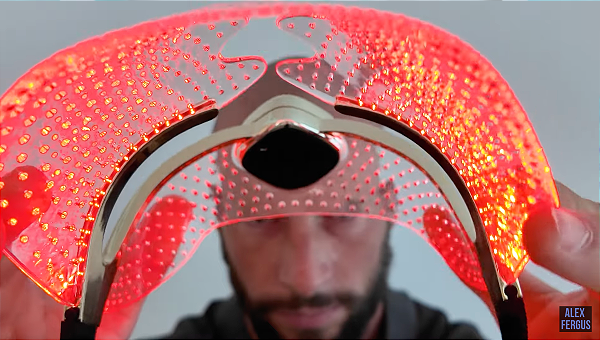
Other Options
TheraBody Theraface Mask ($650 range):
This mask sports a rigid, hard-shell design that houses an impressive 648 true LEDs. These aren’t just for show — they deliver both red and near-infrared wavelengths at clinically proven doses, confirmed with spectrometer measurements.
The even LED distribution ensures solid coverage, especially across key facial zones. It’s not without flaws, but compared to the FAQ mask, this one offers far better power, coverage, and real therapeutic benefit.
CurrentBody Series 2 Mask (~$420):
The CurrentBody mask takes a more flexible, wraparound approach with about 230 LED chips embedded. It combines red, near-infrared, and blue light, giving you a versatile spectrum that supports multiple skin concerns like anti-aging and acne.
The dosing is well within effective ranges, and the fit is comfortable enough for regular use. It strikes a good balance between performance and price, making it a smart mid-tier option.
Nanoleaf Mask (~$250):
If you’re on a budget but still want results, the Nanoleaf mask packs over 400 LEDs, covering all the essential wavelengths—red, near-infrared, and blue. It’s straightforward to use, though the comfort could be better.
For the price, it’s an unbeatable value. You could even buy several Nanoleaf masks for the cost of one FAQ mask and get genuine, effective red light therapy results.
If you’re reconsidering the FAQ mask, these alternatives offer real, clinically-backed benefits without the gimmicks.
The TheraBody Theraface mask delivers heavy-duty power and coverage with its hard-shell design and hundreds of LEDs. The CurrentBody mask balances flexibility, comfort, and effective light therapy in a softer wraparound style. Meanwhile, the Nanoleaf mask shines as an affordable entry point, delivering solid results without breaking the bank.
Each of these options provides meaningful doses of red and near-infrared light—something the FAQ mask unfortunately fails to do.
Conclusion
The Foreo FAQ 202 is a flashy design with a high price tag that ultimately delivers a poor therapeutic experience. If you’ve bought one already, you might want to rethink your investment. And if you’re considering buying, save your money and look elsewhere.
Items Mentioned In This Article:
⭐ Foreo FAQ 202 Mask or other products: code ALEXFER30 – use this link: https://aferg.co/Foreo
⭐ CurrentBody LED Face Mask, use code ALEXFERGUS for 10% off site-wide https://aferg.co/currentbody-mask
⭐ NanoLeaf LED Face Mask, use code ALEX10 for 10% off. https://aferg.co/nanoleaf
⭐ The Therabody Theraface Mask: no discount code, https://aferg.co/therabody
Some of My Latest Reviews
⭐ I Tested the $30 Temu Red Light Mask – Here’s the Truth
⭐ Kala Red Light Mask Review: Scientifically Tested
⭐ Lumara Viso Mask Review: 470 LEDs, But Only Red Light?!
⭐ Best Red Light Panel Yet? Block Blue Light Mega Review
⭐ Mito Red MitoPRO 300 X Review: Upgraded Even Further?
Check out this epic Shopping Tool, years in the making! You can filter products by price, number of LEDs, total power, irradiance, height, width, warranty, company, the company's location, warehouse, year released, pulsing, flicker, modular support, EMF, built-in timer, multi-chip LEDs, stands included, specific wavelengths, shipping, value, noise level, and more!
Found This Interesting? Look At These Articles:
⭐ Red Light Therapy For Hair Growth: Worth The Hype!
⭐ Gut Health & Red Light: A Surprising Connection
⭐ Sunlight Vs Red Light Therapy: Exciting Experiment!
⭐ Red Light Therapy For Melasma & Hyperpigmentation: Everything You Need To Know
⭐ Combating Psoriasis With Red Light Therapy: Potential Game-Changer?
Alex's Bio
Alex Fergus wrote this blog post. Alex is an ISSN Sports Nutrition Specialist, Fitness Professional, and certified Superhuman Coach who continues to expand his knowledge base and help people worldwide with their health and wellness. Alex is recognized as the National Record Holder in Powerlifting and Indoor Rowing and has earned the title of the Australian National Natural Bodybuilding Champion. Having worked as a health coach and personal trainer for over a decade, Alex now researches all things health and wellness and shares his findings on this blog. considerable

